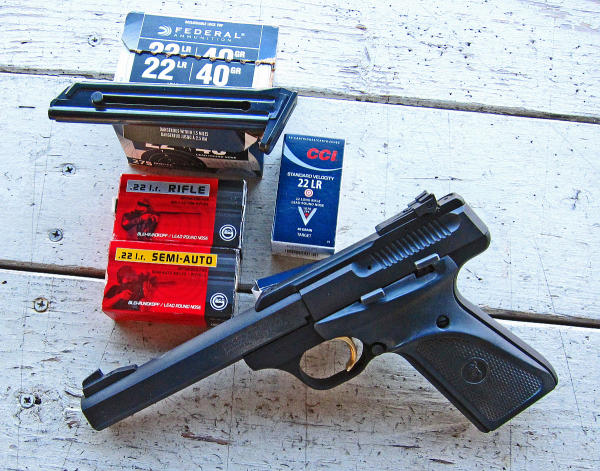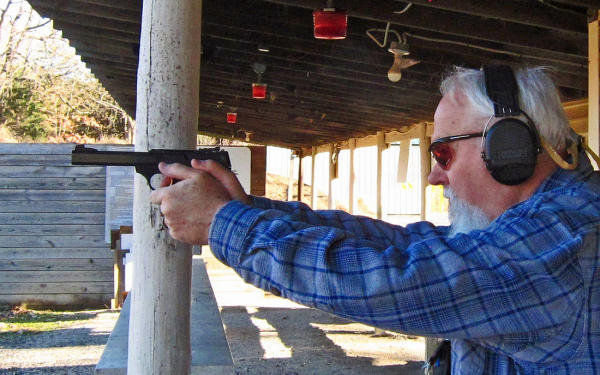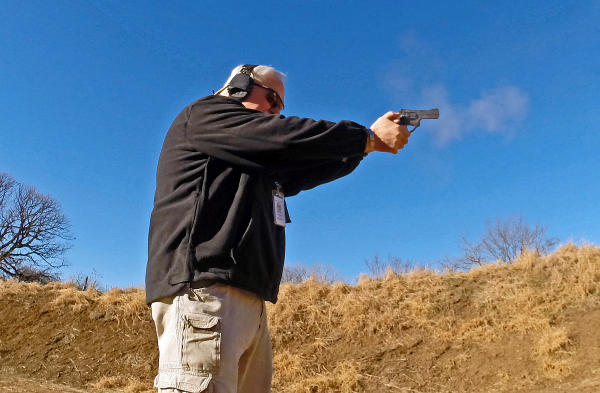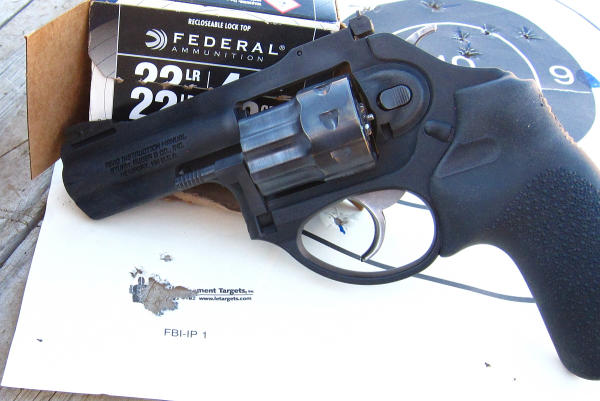
Recently, I’ve been going through my gear and came across an older Browning Buck Mark pistol. Purchased over 20 years ago, I well remember both the person who bought this gun and the person to whom it had been given. Both of them are gone now, passed within a year of each other.
I’d never fired the gun and wondered how it would shoot. It caused me to recall a media trip to Wyoming some years back. We arrived at the lodge and gear from a previous media group was still there. There were a couple of Buck Marks in rifle configuration and I used them. They shot very well.
The present sample – a pistol -- is in a hard plastic box, with a factory label marked “Bull” – apparently referring to the barrel profile. It measures 5 ½” from the muzzle back. It features an adjustable rear sight, nylon-polymer stocks, and two 10-round magazines. The trigger is gold plated.
In attempting to research the gun, I found no information. The Buck Mark product line is generally described online. It’s a rimfire semi-automatic pistol, chambered in .22 Long Rifle, made by the Browning Arms Company and it’s been produced since 1985. The line replaced the Browning Challenger .22 and the Browning International.

I shot the gun with four loads. I included the bulk packed Federal 40 grain round nose lead, CCI Standard Velocity, GECO “Rifle” and “Semi Auto” loads. The distance was 25 yards and the groups consisted of five-shot magazines, two of each load, fired standing using the support posts for the range roof as kind of a barricade position.
The “promotional” bulk-packed Federal 40 grain load put five rounds into 1 7/8” – very good. The CCI Standard Velocity put five rounds into 1 ¼”, a remarkable group. This was matched by the GECO “Semi Auto” load, which featured 100% function. The GECO “Rifle” load, which works well in rifles of my experience, didn’t work at all in the Buck Mark. My best effort still put five pills into two inches though.
This gun is an artifact of another time. It’s a pleasant reminder that while we’re all “temporary,” we leave behind happy memories for those who knew us.

A more recent 22 accompanied me on the following trip to the range, a current favorite, the Ruger LCRx 22. It’s been here since last year and I enjoy working with it. The format is great – 17 ounces, a handy three-inch barrel length, a full-length rubber stock by Hogue – and in .22 LR. I did some shooting on steel from fifteen yards, using the Claude Werner version of the old “ball and dummy” exercise. The object is to make one hit per presentation from low ready. I bring the revolver up and make the best trigger press possible while the sights are within the arc of movement over the target. It fires and I follow through on the sights.
Lowering the gun to ready, I open the cylinder and spin it twice, then close the revolver onto the cylinder. I repeat that process. At some point, I get a “click” instead of a bang. As I’m centering my physical focus on the trigger and my visual focus on sights, I see if I moved the gun at ignition – or at the dry ‘snap.’ When there’s a click, after follow through, I’ll try one more press. Early in the game, there’s a hit on target. Eventually, there are “clicks,” the hammer falling on expended rounds.
I won’t go past but a few ‘failures to fire’ without lowering, rotating the cylinder, and starting over. This makes eight live rounds last a long while and gives me a lot of presses on that trigger.

I finished with the ‘one-hole drill,’ an attempt to put every shot into a single hole from three yards. I didn’t make it, but there was a small cluster of hits – a testament to the ball and dummy practice.
Rimfire guns are good stress relievers and great fun to shoot.
- - Rich Grassi